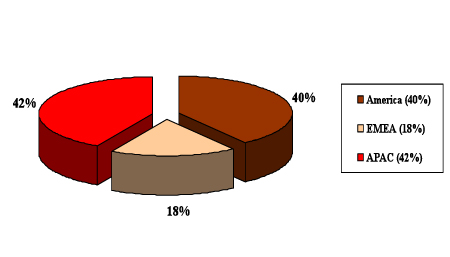Market analysis on the consumption and technology trends of commercial (non-military) fiber optic collimating lens assemblies, widely used in optical communication applications, predict that these technologies will experience strong demand growth rates of more than 45% per year over the period 2013-2018.

The study from ElectroniCast Consultants, Aptos, CA, USA, covers three categories: single lens assemblies; 2-12 lens arrays; and arrays with more than 12 lenses. Both of the lens array categories are forecast with strong growth rates of more than 45% per year. Single lens fiber optic collimator assemblies hold the global market share lead in the selected optical communication applications covered in the study.
“Collimator lenses and lens assemblies are used in a variety of photonic products; however this market study forecasts the use of micro-sized collimator lens assemblies, which are used specifically in optical communication devices. Sales of fiber optic collimator lens assemblies act as a key indicator of the growth of the fiber optic communication component industry,” said Stephen Montgomery, Director of the Fiber Optic Component group at the California-based consultancy.
The global consumption of fiber optic collimator lens assemblies, for commercial optical communications, reached $264.2 million in 2013 and is forecast to reach $298.4 million in 2014, a rise of 12.9%.
The American and APAC regions are forecast to remain relatively close together in relative consumption value market share. The Europe, Middle East and Africa regional segment will see the fastest average annual growth rate during the forecast period.
Collimator applications
Fiber optic collimator lens assemblies are widely used to covert a divergent output laser beam from a fiber or waveguide into an expanding beam of parallel light; therefore, they are used in a variety of optical communication components, such as: modulators, attenuators, transmitters, pump laser modules, switches/optical cross connects, wavelength selective switches, ROADMs, isolators, circulators, expanded-beam connector assemblies, optical filter modules, DWDM, tunable filters, optical sensors, optical signal processing, integrated/hybrid packaged modules, and other active and passive components and devices.





